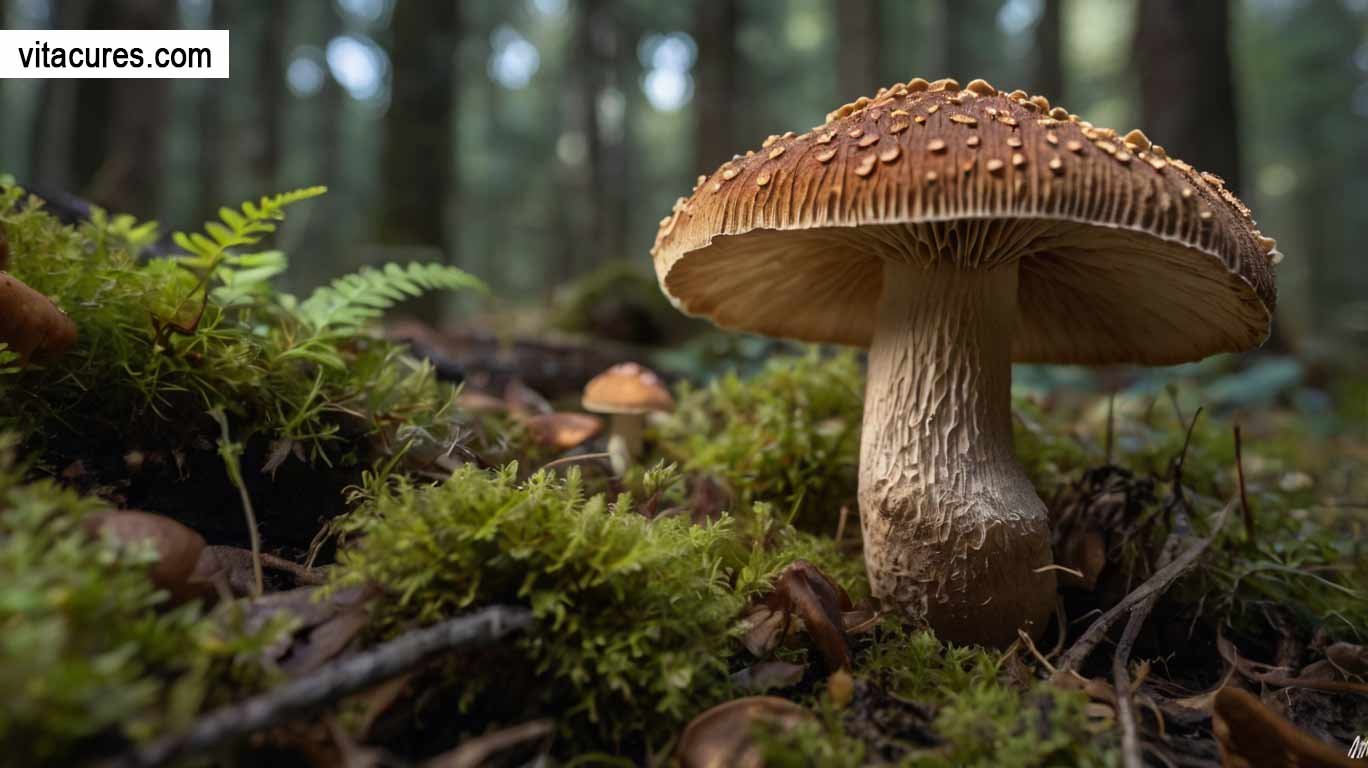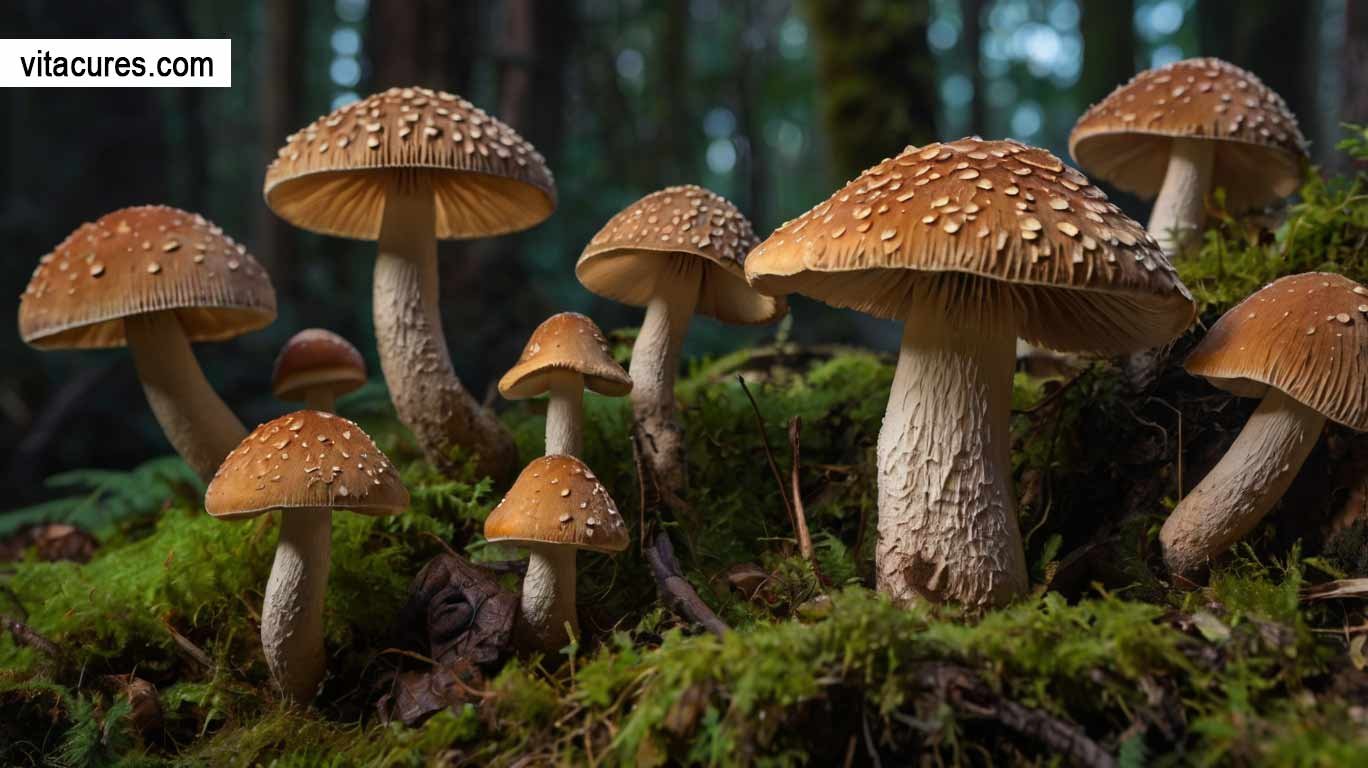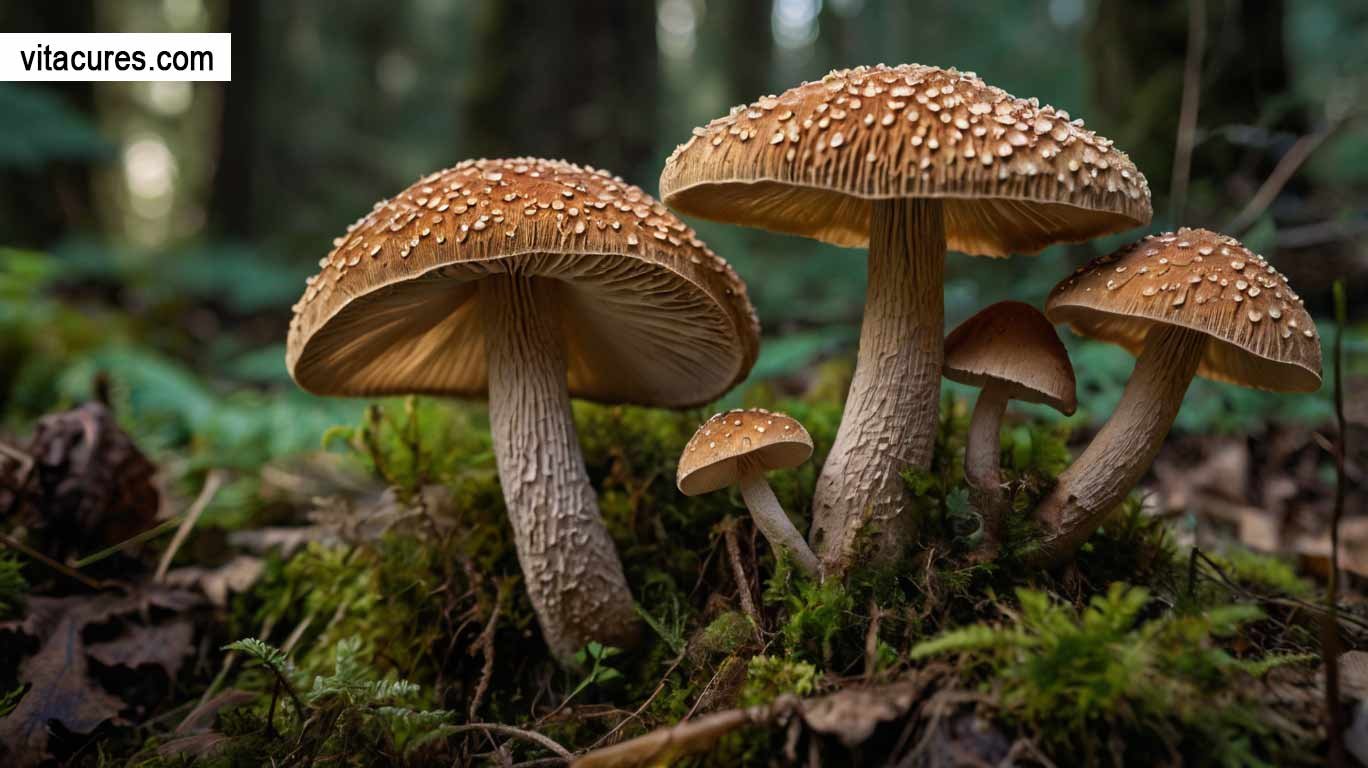Shrooms typically last for around six hours, with peak effects occurring in the first two to three hours. The duration of shroom effects can vary depending on factors such as dosage, individual tolerance, and method of consumption.
Magic mushrooms, also known as shrooms, have been used for their hallucinogenic properties for centuries. They contain the psychoactive compound psilocybin, which can cause altered perceptions, vivid hallucinations, and profound introspection. While the effects of shrooms can be intense and long-lasting, they are generally considered safe when used responsibly and in a controlled setting.
However, it is important to note that mushrooms are still classified as a Schedule I drug in the United States and are illegal in many countries. If you are considering taking mushrooms, it is important to educate yourself about the potential risks and to approach their use with caution.
Shroom Duration

When it comes to the duration of shroom effects, understanding the psychedelic basics and managing expectations is crucial. The duration of a shroom trip can vary based on individual factors and the type of mushrooms consumed. In this article, we will delve into the basics of psychedelics, examine the expectations versus reality, and provide insights into how long shrooms last and stay in your system.
Psychedelic Basics
Before exploring the duration of shrooms, it’s essential to grasp the psychedelic basics. Psychedelic substances, such as pilocybin mushrooms, can induce profound alterations in perception, mood, and cognition. These substances interact with serotonin receptors in the brain, leading to perceptual changes and an altered state of consciousness.
Expectations Vs. Reality
When considering the duration of shrooms, it’s important to manage expectations and understand the reality of psychedelic experiences. While some individuals anticipate a specific duration for their shroom trip, the reality is that various factors, including dosage, individual metabolism, and environmental influences, can significantly impact the duration of the trip. It’s crucial to approach shroom consumption with an open mind and a flexible attitude toward the duration of the experience.
Active Compound In Shrooms
The active compound in shrooms, psilocybin, can have effects that last for about six hours during a trip. The duration can vary depending on individual factors such as dosage and metabolism.
Psilocybin Chemistry
Psilocybin, the active compound found in magic mushrooms, is a naturally occurring hallucinogen. It belongs to a class of drugs known as tryptamines. Tryptamines are a group of compounds that have similar structures and produce psychoactive effects when consumed. The chemical structure of psilocybin is similar to that of serotonin, a neurotransmitter responsible for regulating mood, sleep, and appetite. This similarity allows psilocybin to bind to serotonin receptors in the brain, leading to altered perception, hallucinations, and mood changes.
Conversion To Psilocin
When ingested, psilocybin is rapidly converted to psilocin in the body. Psilocin is the active form of the compound that interacts with serotonin receptors in the brain. Alkaline phosphatases are a type of enzyme that facilitates this conversion. The conversion of psilocybin to psilocin is crucial for the psychedelic effects of magic mushrooms. Psilocin has a higher affinity for serotonin receptors compared to psilocybin, allowing it to produce stronger hallucinogenic effects.
Once psilocin is formed, it binds to serotonin receptors, primarily the 5-HT2A receptor in the brain. This interaction leads to an increase in neuronal activity and the release of neurotransmitters such as dopamine and glutamate. These changes in brain activity result in the characteristic hallucinations and altered states of consciousness experienced during a magic mushroom trip.
In conclusion, psilocybin is the active compound in magic mushrooms responsible for their hallucinogenic effects. It undergoes conversion to psilocin in the body, which then interacts with serotonin receptors in the brain to produce psychedelic experiences. Understanding the chemistry of psilocybin and its conversion to psilocin provides insights into the mechanisms behind the effects of magic mushrooms. Note: The H3 headings adhere to HTML syntax.
Shroom Trip Phases
The shroom trip typically consists of three phases: onset, peak, and comedown. The effects of shrooms can last around 6 hours, with the peak occurring 2-3 hours after ingestion. Factors like dosage and individual metabolism can influence the duration of the trip.
Onset Of Effects
When consuming shrooms, the onset of effects usually begins within 20 to 40 minutes.
Effects may include altered perception, enhanced colors, and changes in mood.
Users may start to feel a sense of euphoria and increased sensory experiences.
Peak Experience
The peak of a shroom trip typically occurs about 1.5 to 2 hours after ingestion.
This phase is characterized by intense hallucinations and a profound sense of connection.
Users may experience deep insights and spiritual revelations during this stage.
Come Down
As the effects start to wane, users enter the come-down phase, usually around 4 to 6 hours after consumption.
Feelings of introspection and calmness may prevail during this phase.
Users may also feel fatigued or emotionally drained as the trip comes to an end.
Factors Affecting Duration

When it comes to the duration of shroom trips, there are several factors that can influence how long the effects last. These factors include dosage variations, individual metabolism, and species and potency. Understanding these factors can help individuals better prepare for their shroom experience.
Dosage Variations
The dosage of shrooms consumed plays a significant role in determining the duration of the trip. Higher doses typically result in longer trips, while lower doses may have shorter durations. It’s important to note that individual tolerance levels can also affect the duration, as some people may be more sensitive to the effects of psilocybin mushrooms than others.
Individual Metabolism
Individual metabolism can also impact how long shroom trips last. Metabolism refers to the body’s ability to process and eliminate substances. People with faster metabolisms may experience shorter trips as their bodies break down psilocybin more quickly. On the other hand, individuals with slower metabolisms may have longer-lasting effects.
Species And Potency
The species and potency of the mushrooms consumed can greatly influence the duration of the trip. Different species of magic mushrooms contain varying levels of psilocybin, the psychoactive compound responsible for the hallucinogenic effects. Certain species may have higher potency, resulting in longer and more intense trips, while others may have lower potency and shorter durations.
It’s important to note that the information provided here is a general guideline, and individual experiences may vary. Factors such as set and setting, mindset, and overall health can also influence the duration of shroom trips. It is always recommended to approach the consumption of magic mushrooms with caution and to be aware of the potential effects and risks involved.
Short-term Effects Of Shrooms
The short-term effects of shrooms typically last about six hours, with peak effects occurring in the first few hours. The duration of the trip can be influenced by individual factors and the dosage consumed. It’s important to be mindful of the effects and plan accordingly.
Short-Term Effects of Shrooms Magic mushrooms, also known as shrooms, are a type of psychedelic drug that can cause sensory alterations and emotional impact. The effects of shrooms typically last between four to six hours, but can vary depending on individual factors such as dosage, tolerance, and method of consumption. Sensory Alterations One of the most prominent short-term effects of shrooms is sensory alterations.
These can include changes in visual perception, such as colors appearing more vibrant or objects appearing to move or breathe. Some people may also experience changes in auditory perception, with sounds becoming more pronounced or distorted. Additionally, shrooms can cause changes in tactile perception, with some people reporting a heightened sense of touch or altered sensations on the skin.
Emotional Impact In addition to sensory alterations, shrooms can also have a significant emotional impact on the user. This can include feelings of euphoria, introspection, and heightened empathy towards others. However, shrooms can also cause negative emotions such as anxiety, paranoia, and confusion, especially when consumed in high doses or in an unfamiliar setting.
It is important to note that the effects of shrooms can vary greatly depending on individual factors, and that the use of these drugs can be dangerous if not approached with caution. It is always recommended to use shrooms in a safe and controlled environment, with the guidance of an experienced individual.
Long-term Impact On Users
When considering the long-term impact of shrooms on users, it’s essential to understand the potential psychological insights and the risk of dependency associated with their use.
Psychological Insights
Psychedelic experiences induced by shrooms can have profound and long-lasting psychological effects on users. The intense hallucinations and altered perceptions during a trip can lead to lasting changes in thought patterns, emotions, and overall perception of reality.
Potential For Dependency
Shrooms have the potential to create psychological dependency, as users may seek to replicate the intense experiences they had during previous trips. This craving for psychedelic experiences can lead to a pattern of repeated use, which may result in an increased tolerance and psychological reliance on the substance.
Detection Windows
The duration of shroom effects varies based on individual factors and dosage. Factors such as the type and potency of the mushrooms, as well as the dose consumed, can influence how long the trip will last. It is important to note that the effects typically last around six hours, with peak effects occurring during that time.
Testing For Psilocybin
Factors Influencing Test Results
Detection Windows refer to the timeframe within which psilocybin, the active compound in magic mushrooms, can be detected in the body through various testing methods.
Testing For Psilocybin
When testing for psilocybin, methods such as urine, blood, or hair tests are commonly used. Each method has a different detection window.
- Urine tests: Detect psilocybin up to 24 hours after ingestion
- Blood tests: Detect psilocybin up to 1-2 days after ingestion
- Hair tests: Detect psilocybin up to 90 days after ingestion
Factors Influencing Test Results
Several factors can influence the accuracy and reliability of test results for psilocybin detection:
- Frequency of mushroom use
- Metabolism rate of the individual
- Body mass and hydration levels
- Type of test administered
Understanding these factors is crucial for interpreting test results accurately. It is essential to consider these variables when determining the presence of psilocybin in the body.
Risks And Safety Concerns

Understanding the risks and safety concerns related to the duration of shroom effects is crucial. Factors like dosage and individual differences influence how long shrooms last and stay in your system. It’s essential to be informed and mindful of these aspects for a safe experience.
Adverse Reactions
Harm Reduction Strategies
When consuming shrooms, it’s important to be aware of potential risks and safety concerns.
Adverse Reactions
Adverse reactions to shrooms can include anxiety, confusion, and paranoia.
It’s crucial to monitor your mental state during the trip.
Harm Reduction Strategies
- Start with a low dose to gauge your body’s reaction.
- Have a trusted trip sitter present for support.
- Avoid mixing shrooms with other substances.
- Stay hydrated and ensure a safe environment.
Legal Status And Regulations
When it comes to the legal status and regulations surrounding psychedelic mushrooms, it is essential to understand the global perspectives and the shifting legal landscapes.
Global Legal Perspectives
In various countries around the world, the legality of psychedelic mushrooms varies significantly. While some nations have decriminalized or legalized their use, others strictly prohibit their possession, sale, or consumption.
Shifting Legal Landscapes
The legal status of psychedelic mushrooms is continuously evolving, with some regions moving towards decriminalization or medical legalization. However, it is crucial for individuals to stay informed about the specific laws and regulations in their respective jurisdictions to avoid any legal consequences.
Shroom Usage In History
Exploring the historical usage of shrooms unveils a rich tapestry of tradition and rediscovery. Let’s delve into the fascinating journey of shroom consumption through the ages.
Traditional Use
Ancient cultures across the globe, from indigenous tribes to ceremonial practices, embraced shrooms for spiritual enlightenment and healing purposes.
Modern Rediscovery
In recent times, the scientific community has rekindled interest in the therapeutic potential of shrooms, leading to groundbreaking research and societal acceptance.
Preparing For A Shroom Experience
Before embarking on a shroom journey, it’s essential to adequately prepare yourself for the experience. Preparing for a shroom experience involves setting the right environment and taking necessary safety precautions. Understanding the factors that affect the duration of a shroom trip can also help in managing expectations and ensuring a positive experience.
Set And Setting
The concept of “set and setting” refers to the mindset and physical environment in which a psychedelic experience takes place. Both elements play a crucial role in shaping the overall experience. When preparing for a shroom experience, consider the following:
- Choose a comfortable and familiar setting where you feel safe and relaxed.
- Set a positive intention for the experience to guide your mindset.
- Avoid any potential triggers or stressors that could negatively impact your mental state.
- Engage in calming activities such as meditation or gentle stretching to prepare your mind and body.
Safety Precautions
Prioritizing safety is paramount when preparing for a shroom experience. Taking the following precautions can help minimize potential risks and ensure a smoother journey:
- Have a trusted sober companion present to provide support and assistance if needed.
- Stay hydrated and nourished before consuming shrooms to support your physical well-being.
- Research the dosage and effects of the specific type of shrooms you plan to consume.
- Avoid mixing shrooms with other substances, including alcohol and prescription medications.
By carefully considering your set and setting and implementing safety precautions, you can enhance the overall quality of your shroom experience and promote a sense of well-being throughout the journey.
The Role Of Dosage
The duration of a shroom trip depends on the dosage consumed and individual factors. There are different methods of taking psychedelic mushrooms, and the effects typically last around six hours, with peak effects during that time. Understanding how long shrooms last can help individuals plan their experience accordingly.
Measuring Dosages
The role of dosage is crucial when it comes to the effects of shrooms. The amount of psilocybin consumed in shrooms determines the intensity of the trip, the length of the experience, and the potential risks. Typically, a standard dose of shrooms contains 1-2.5 grams of dried mushrooms. However, the potency of shrooms varies, so it’s important to measure the dosage accurately.
Microdosing Vs. Full Doses
There are two main methods of taking shrooms: microdosing and full doses. Microdosing involves taking a small amount of shrooms, usually 0.1-0.5 grams, which is not enough to cause a full-blown trip. Microdosing is believed to provide therapeutic benefits, such as increased creativity, productivity, and focus, without the psychedelic effects. On the other hand, full doses involve taking a higher amount of shrooms, usually 2-5 grams, to experience the full effects of the trip. Full doses can lead to intense hallucinations, euphoria, and introspection, but also carry a higher risk of negative side effects. When it comes to the duration of shroom trips, microdosing can last for several hours, while full doses can last up to 6-8 hours. The effects of shrooms may start to kick in within 20-60 minutes after ingestion, and the peak experience may occur 2-3 hours after consumption. In conclusion, the role of dosage is significant when it comes to the effects of shrooms. Measuring the dosage accurately is crucial to ensure a safe and enjoyable trip. Whether you choose to microdose or take a full dose, be aware of the potential risks and effects, and always consult with a healthcare professional before consuming shrooms.
Physical Effects On The Body
When it comes to consuming magic mushrooms, also known as “shrooms,” it is important to understand the physical effects they can have on the body. These effects can vary depending on individual factors such as dosage, tolerance, and metabolism. In this section, we will explore the physiological responses and after-effects of consuming shrooms.
Physiological Responses
When ingested, magic mushrooms can lead to a range of physiological responses in the body. The active compound in shrooms, psilocybin, interacts with serotonin receptors in the brain, resulting in altered sensory perception and changes in mood. Some of the common physiological responses include:
- Enhanced sensory perception, including heightened colors, sounds, and textures.
- Changes in mood, ranging from euphoria to introspection.
- Increased heart rate and blood pressure.
- Dilated pupils.
- Changes in body temperature, such as feeling warmer or colder.
- Distorted sense of time and space.
It is important to note that the intensity and duration of these physiological responses can vary from person to person and depend on the dosage consumed.
After-effects
After the initial trip, individuals may experience after-effects that can last for several hours or even days. These after-effects can include:
- Feeling mentally and physically exhausted.
- Heightened sensitivity to stimuli.
- Changes in mood and emotions.
- Reflection and introspection.
- Increased creativity and openness.
- Improved mood and overall well-being.
It is important to allow yourself time to rest and recuperate after a shroom experience, as the after-effects can be mentally and physically draining.
In conclusion, the physical effects of magic mushrooms on the body can be both profound and long-lasting. Understanding the physiological responses and after-effects is crucial for anyone considering consuming shrooms. It is always recommended to approach these substances with caution, in a safe and controlled environment, and to be aware of your own physical and mental well-being.
Mental And Emotional Influence
When consuming shrooms, individuals experience a range of mental and emotional effects that can vary in intensity and duration.
Cognitive Effects
- Enhanced creativity and introspection
- Altered perception of time and space
- Heightened sensory experiences
Mood Fluctuations
- Feelings of euphoria and joy
- Occasional periods of anxiety or confusion
- Increased emotional sensitivity
Shrooms In Medical Research
Magic mushrooms, also known as ‘shrooms’, have gained significant attention in medical research due to their potential therapeutic effects. The active compound found in these mushrooms, psilocybin, has shown promise in treating various mental health conditions and has opened up new avenues for exploration in the field of psychiatry.
Therapeutic Potential
The therapeutic potential of magic mushrooms lies in their ability to induce profound psychological experiences that can lead to long-lasting positive changes in individuals. Research suggests that psilocybin-assisted therapy can be effective in treating conditions such as depression, anxiety, post-traumatic stress disorder (PTSD), and addiction.
Studies have shown that psilocybin can help individuals gain new perspectives, enhance emotional well-being, and increase their openness to new experiences. These effects can be particularly beneficial in therapy settings, where patients can work through deep-rooted issues and gain insights that may not be easily accessible through traditional therapeutic methods.
Ongoing Studies
Researchers around the world are actively studying the potential therapeutic applications of magic mushrooms. Ongoing studies are investigating the efficacy of psilocybin-assisted therapy in various mental health conditions, including treatment-resistant depression, end-of-life distress in cancer patients, and substance use disorders.
These studies follow rigorous scientific protocols and aim to establish the safety, dosage, and long-term effects of psilocybin therapy. Preliminary results have shown promising outcomes, with many participants reporting significant improvements in their symptoms and quality of life.
Shrooms have captured the attention of medical researchers due to their therapeutic potential. Ongoing studies are shedding light on the effectiveness of psilocybin-assisted therapy in treating various mental health conditions. As the research continues, the hope is that magic mushrooms can offer new avenues for healing and provide relief to individuals struggling with mental health issues.
Comparing Shrooms With Other Psychedelics
When it comes to the world of psychedelics, it’s essential to understand the differences between various substances. Comparing shrooms with other psychedelics sheds light on their unique characteristics and effects.
Lsd Vs. Psilocybin
LSD, also known as acid, and psilocybin, the psychoactive compound in magic mushrooms, are two popular psychedelics. While LSD is a synthetic substance, psilocybin is a natural compound found in certain species of mushrooms. Both substances can induce hallucinations, but they differ in terms of duration and intensity.
Natural Vs. Synthetic Hallucinogens
When comparing natural and synthetic hallucinogens, it’s important to note that natural substances like psilocybin are derived from organic sources, such as mushrooms, while synthetic hallucinogens like LSD are created through chemical synthesis in a laboratory setting.
Cultivation And Types Of Shrooms
When it comes to the cultivation and types of shrooms, it’s essential to understand the growing techniques and common varieties available. Whether you are a novice or experienced grower, learning about the different types of shrooms and the best cultivation methods is crucial for a successful harvest.
Growing Techniques
When it comes to growing shrooms, there are various techniques that individuals can explore. The most common method is to cultivate them indoors using a substrate such as brown rice flour or vermiculite. This allows for controlled conditions and a higher success rate. Another popular technique is outdoor cultivation, which involves growing shrooms in a natural environment, such as a garden or wooded area.
Common Varieties
There are several common varieties of shrooms that enthusiasts can grow, each with its own unique characteristics and growing requirements. Some of the most popular types include:
- Psilocybe Cubensis: Known for its potency and widespread availability, this variety is a favorite among growers.
- Psilocybe Cyanescens: Also known as “wavy caps,” this variety is known for its powerful effects and distinct appearance.
- Psilocybe Semilanceata: Commonly referred to as “liberty caps,” this variety is often found in grassy areas and is known for its small, bell-shaped caps.
- Psilocybe Azurescens: Considered one of the most potent shroom varieties, this type is native to the Pacific Northwest region of the United States.
The Cultural Significance Of Shrooms
Magic mushrooms, also known as shrooms, have a rich cultural history and hold significant meaning in various aspects of society. From religious and spiritual practices to their presence in popular culture, shrooms have made a lasting impact on human civilization.
Religious And Spiritual Use
Shrooms have been used for centuries in religious and spiritual ceremonies by different cultures around the world. Indigenous communities in Central and South America, such as the Mazatec people in Mexico, have incorporated the use of psilocybin mushrooms into their rituals to induce altered states of consciousness and connect with the divine.
These mushrooms are often considered sacred and are believed to have the power to reveal hidden truths, provide spiritual insights, and facilitate communication with spiritual beings. The profound experiences induced by shrooms have been valued for their ability to promote introspection, personal growth, and a deeper understanding of the self and the universe.
Pop Culture References
Shrooms have also made their way into popular culture, being referenced in various forms of media, including music, art, literature, and films. From iconic songs like The Beatles’ “Lucy in the Sky with Diamonds,” which is believed to be influenced by psychedelic experiences, to movies like “Alice in Wonderland” and “Fear and Loathing in Las Vegas,” where shrooms play a prominent role in the storyline, these mushrooms have become synonymous with psychedelic exploration and counterculture movements.
Furthermore, the resurgence of interest in shrooms in recent years has led to their portrayal in modern television shows like “Stranger Things,” where the mysterious Upside Down world is reminiscent of psychedelic experiences induced by these mushrooms.
The cultural significance of shrooms is not limited to entertainment media alone. They have also influenced contemporary art movements, with artists exploring themes of altered states of consciousness, spirituality, and the interconnectedness of all things through their work.
Overall, the cultural significance of shrooms is multifaceted, ranging from their use in ancient religious practices to their portrayal in popular culture. These mushrooms continue to captivate and intrigue individuals, serving as a gateway to profound experiences and inspiring creativity and introspection.
Future Of Psychedelics
The future of psychedelics is a topic of growing interest. When it comes to shrooms, the effects typically last for about six hours, with peak effects occurring around two to three hours after consumption. However, individual factors such as dosage and metabolism can affect how long shroom trips last.
Decriminalization Efforts
In recent years, there has been a growing movement to decriminalize psychedelic substances like psilocybin mushrooms, also known as shrooms. Decriminalization means that while the use, possession, and distribution of these substances is still illegal, law enforcement agencies are instructed to deprioritize enforcement of these laws. This movement has gained significant traction in cities like Denver, Colorado, and Oakland, California, which have already decriminalized shrooms and other psychedelics. Other cities like Santa Cruz, California, and Ann Arbor, Michigan, are also considering similar measures.
Innovation In Psychedelic Therapy
While the recreational use of shrooms is still illegal in most parts of the world, there has been a growing interest in the potential therapeutic benefits of these substances. Recent studies have shown that psilocybin therapy can be effective in treating a range of mental health conditions, including depression, anxiety, and addiction. In response to this growing interest, there has been a surge in innovation in the field of psychedelic therapy. Several companies are currently working on developing psilocybin-based treatments, and there has also been a growing interest in the use of microdosing, which involves taking small, sub-perceptual doses of psilocybin to enhance creativity, productivity, and overall well-being. As the stigma around psychedelics continues to dissipate, it is likely that we will continue to see further innovation in the field of psychedelic therapy, and a growing number of people will have access to these potentially life-changing treatments. Overall, the future of psychedelics is looking bright, with growing public support for decriminalization efforts and increasing interest in the therapeutic potential of these substances. As more research is conducted and more people become aware of the benefits of psychedelics, we can expect to see continued growth and innovation in this exciting field.
Personal Accounts And Experiences
Discovering how long shrooms last can vary based on individual factors and dosage. Typically, a shroom trip lasts about six hours, with peak effects during the first few hours. Factors such as the type and potency of the mushroom, dose, and the person’s metabolism can influence the duration of the trip.
Testimonials
Personal accounts and experiences can vary greatly when it comes to how long shrooms last. Here are some testimonials from individuals who have tried magic mushrooms: – “I took shrooms with a group of friends and the trip lasted about 6 hours for me. However, my friend who took the same amount had a trip that lasted over 8 hours.” – John, 25 – “I tried shrooms for the first time and the trip lasted around 4 hours. I felt a sense of euphoria and had vivid hallucinations.” – Sarah, 27 – “My shroom trip lasted almost 10 hours. I had a difficult time coming down and felt anxious and paranoid.” – Tom, 30
Lessons Learned
From these personal accounts, it’s clear that the duration of a shroom trip can vary greatly depending on individual factors such as dosage, tolerance, and metabolism. It’s important to start with a small dose and gradually increase if needed. Additionally, it’s important to have a safe and comfortable environment with trusted individuals to avoid any negative experiences. It’s also important to note that shrooms can stay in your system for up to 24 hours, so it’s important to avoid driving or operating heavy machinery until the effects wear off completely. In conclusion, personal accounts and experiences show that the duration of a shroom trip can vary greatly. It’s important to approach shrooms with caution and to have a safe and comfortable environment to ensure a positive experience.
Frequently Asked Questions
How Long Do Shroom Effects Last?
The effects of magic mushrooms typically last about 6 hours, with the peak experience occurring in the first 2-3 hours. However, individual factors such as dosage, metabolism, and mindset can influence the duration of the trip.
What Determines How Long A Shroom Trip Will Last?
The duration of a shroom trip is largely determined by the dosage consumed. Higher doses often result in longer and more intense experiences, while lower doses may lead to shorter trips. Additionally, individual differences in metabolism and tolerance can also play a role.
How Long Do Shrooms Stay In Your System?
After ingestion, psilocybin mushrooms can be detected in the body for a relatively short period. Typically, they can be detected in urine for up to 24 hours, but factors such as metabolism and the specific type of test being used can impact detection windows.
Conclusion
The duration of shroom effects can vary depending on individual factors and the dosage consumed. On average, a shroom trip lasts about six hours, with peak effects occurring during this time. It is important to note that the type and potency of the mushrooms, as well as the person’s metabolism, can also influence how long shrooms stay in the system.
If you are considering taking shrooms, it is essential to be well-informed and seek help if needed.



